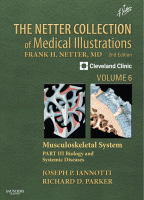Physical Address
304 North Cardinal St.
Dorchester Center, MA 02124

Bones of the Hand Metacarpal Bones Five metacarpals form the skeleton of the hand. They are miniature “long” bones, comprising a shaft, a head, and a base. They are palpable on the dorsum of the hand and terminate distally in…

Bones and Joints of Forearm and Wrist Distal Parts of Radius and Ulna The distal end of the radius is broadened because its carpal articular surface is the bony contact of the forearm with the wrist and hand. This surface…

Bony Anatomy and Landmarks Anteriorly, the contour of the biceps muscle is seen starting in the upper arm and extending distally into the cubital fossa, which is the inverted triangular depression on the anterior aspect of the elbow. The flexion…

Bones and Joints of Shoulder The function of the upper extremity is highly dependent on correlated motion in the four articulations of the shoulder. These include the glenohumeral joint, the acromioclavicular joint, the sternoclavicular joint, and the scapulothoracic articulation. The…

Anatomy of the Ankle and Foot Tendon Sheaths at Ankle The extrinsic tendons of the foot originate as muscles in the leg, and as the tendons cross the ankle they must change their orientation. The retinaculum and the corresponding bony…

Compartments of Leg Fasciae and Compartments The fascia lata of the thigh continues into the leg, where it is designated as the crural fascia (see Plate 4-2 ). At the knee, the fascia has many attachments—the patella, patellar ligament, tibial…

Anatomy of the Knee Knee Joint The knee is primarily a hinge joint that permits flexion and extension. In flexion, there is sufficient looseness to allow a small amount of voluntary rotation; in full extension, some terminal medial rotation of…

Superficial Veins and Cutaneous Nerves Superficial Veins Certain prominent veins, unaccompanied by arteries, are found in the subcutaneous tissue of the lower limb (see Plate 2-1 ). The principal ones are the greater and lesser saphenous veins, which arise in…

Vertebral Column The vertebral column is built from individual units of alternating bony vertebrae and fibrocartilaginous discs. These units are intimately connected by strong ligaments and supported by paraspinal muscles with tendinous attachments to the spine. The individual bony elements…

Neurovascular Injury Displacement of fracture fragments or bone ends at a dislocated joint carry the risk of producing compression or laceration of adjacent vessels and nerves (see Plate 9-1 ). Critical neurovascular structures (e.g., the brachial plexus) lie deep in…